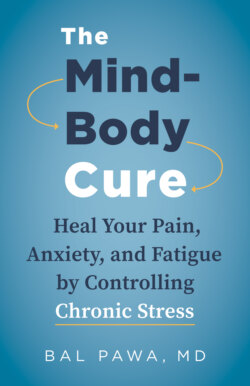Читать книгу The Mind-Body Cure - Bal Pawa - Страница 37
На сайте Литреса книга снята с продажи.
➤ Our Intel Processor: The Hypothalamus
ОглавлениеThe brain has a built-in “Intel processor” called the hypothalamus, an almond-sized area at the base of the brain. Like a busy traffic cop, it is continuously scanning the environment for signs of danger, processing the information at lightning speed, and directing a multitude of functions to keep us safe. It gets us up in the morning and starts the adrenaline flowing. It controls the molecules that allow us to experience emotions such as exhilaration, happiness, anger, or upset. The hypothalamus is also a bit like a thermostat, always aiming for homeostasis. It controls how much we eat, regulates our body temperature, and acts as our “emotion detector.”
The hypothalamus sends instructions to the body in two ways. First, it controls blood pressure, heart rate, breathing, digestion, and all the sympathetic and parasympathetic functions through the ANS, which speeds up or slows down body functions. Second, it regulates growth and metabolism as well as emotion by communicating with the pituitary gland, the pea-sized endocrine gland at the bottom of the hypothalamus that we often refer to as the “master gland.” The instant processing mechanism of the hypothalamus works efficiently using all the senses and memory storage, which communicate with each other. Then it directs the pituitary gland to regulate our response to our environment through hormones and other chemicals. Together, they decide when to release each hormone and how much to release.
The hypothalamus and the pituitary gland also form part of the limbic system, an area of the brain that interprets emotional responses, stores memories, and regulates hormones.1 Two key structures of the limbic system are the almond-shaped amygdala and the tiny nub called the hippocampus that lies adjacent to it. The amygdalae (there is one on each side of the brain) determine which memories are stored and where in the brain each of those memories is to be kept, and the hippocampi (there is also one of these on each side of the brain) send the memories to their assigned part of the brain for long-term storage and retrieve them when necessary.
